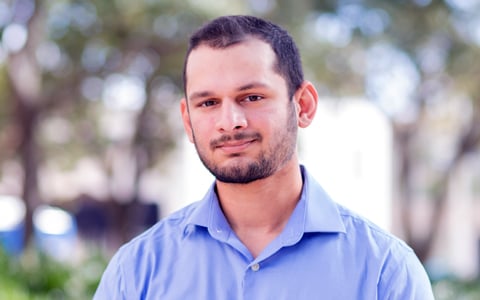
Circumstances like the water crisis in Flint, Michigan, severe droughts affecting the western U.S., and Florida’s toxic algae blooms are markers of just how critical access to clean, fresh water is for communities across the country. VHB Environmental Scientist John Hussain, PWS, understands the toll that climate events and human impact have on our environment. A childhood growing up at the entrance to the Everglades—the “River of Grass” that encompasses more than 1.5 million acres of wetlands in southern Florida—spurred a lifelong interest in the environment. Now, he helps clients like the Southwest Florida Water Management District, Tampa Bay Water, and Sarasota County study, manage, and prioritize water resources for future generations.
We talked with John about steps he’s taking at work and at home to elevate the important role our wetlands, aquifers, rivers, and other water sources play in helping lessen the impacts of climate change and make our communities more resilient.
VHB: You are passionate about sustainability and preserving the natural environment. How did you come to make this the focus of your career?
John: I grew up in south Florida near the entrance to Everglades National Park. I would visit the Park often on school field trips, and I was the kid that was tallying the alligators and earning every Junior Park Ranger badge available. We experienced a drought in the mid-2000s, and I remember stories in the news and at school about the importance of conserving water at home and how water can be a finite resource for both humans and natural ecosystems. From an early age, the natural environment, and especially wetlands, imprinted on me how it was inextricably connected to my life. I’ve also grown up in a time when climate science has become robust alongside our recognition of the causes and effects of climate change. Climate change will be tightly linked to our future water availability and ecosystem health.
I studied Environmental Sciences at the University of Central Florida. Their interdisciplinary approach allowed me to study water quality, biology, ecology, chemistry, socio-environmental issues, and more. Internships with a St. John’s River Water Management District and Orange County Environmental Protection Division introduced me to wetland, lake, and stream surveys as well as the regulatory process. You could say I’m a lifelong learner as I’m also midway through a master’s degree in Soil and Water Sciences from the University of Florida in Gainesville.
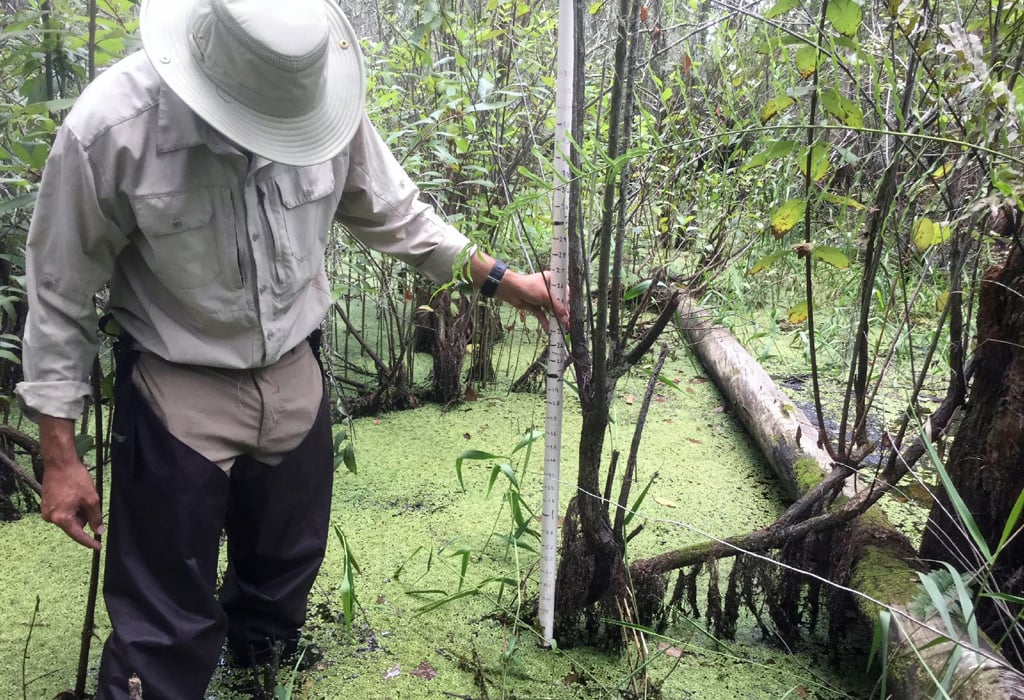
VHB: The Infrastructure Investments and Jobs Act (IIJA) is structured to invest in our communities to help prepare them for climate events and become more resilient. What’s affecting the water supply in Florida? What can VHB clients and consultants in coastal communities like yours do to help?
John: Since our primary water sources rely directly on precipitation to be recharged, any changes to the weather pattern can have substantial implications. We can only pump a certain amount of freshwater out of our aquifers before they begin to fill with undrinkable saltwater, or begin to dry up our wetlands, lakes, and rivers. While Florida is likely to receive more frequent and violent storms that will bring large rain amounts for short periods, our dry seasons (which account for the majority of the year) could become more arid with greater possibility of drought. This will necessitate adapting our water sources from season to season or creating infrastructure to store excess water when it is plentiful. Our clients are also considering other options, such as treating seawater or wastewater to make up for deficits. To really make things challenging, Florida has generally been growing faster than its infrastructure and environmental resources can keep pace. These solutions require extensive planning, coordination, permitting, and environmental analysis, all of which are hallmarks of VHB’s integrated approach to water resources projects.
Monitoring our water resources is an essential part of the resiliency strategy, and our clients understand that their decisions must be data-informed. VHB has been working with agencies, local governments, and utilities for years throughout Florida to help design, assess, and implement monitoring programs that characterize our water chemistry and availability. The data we gather contributes to a body of knowledge that is used regularly to make million-dollar investments. Sarasota County Government, for whom we manage a creek sampling program that characterizes more than 80 sites monthly, recently moved forward with a plan to upgrade all of its wastewater treatment plants to current technological standards based on data we helped collect, as well as assistance from the IIJA.
In Florida, two significant and harmful red tide episodes occurred over the past four years. Red tide is a type of algae bloom that releases toxins in the water, kills fish, irritates residents’ lungs, and negatively affects local economies, potentially causing millions of dollars in losses to coastal businesses. Florida’s elected officials understand the urgency and have invested in helping local governments study and make improvements to minimize future red tide events.
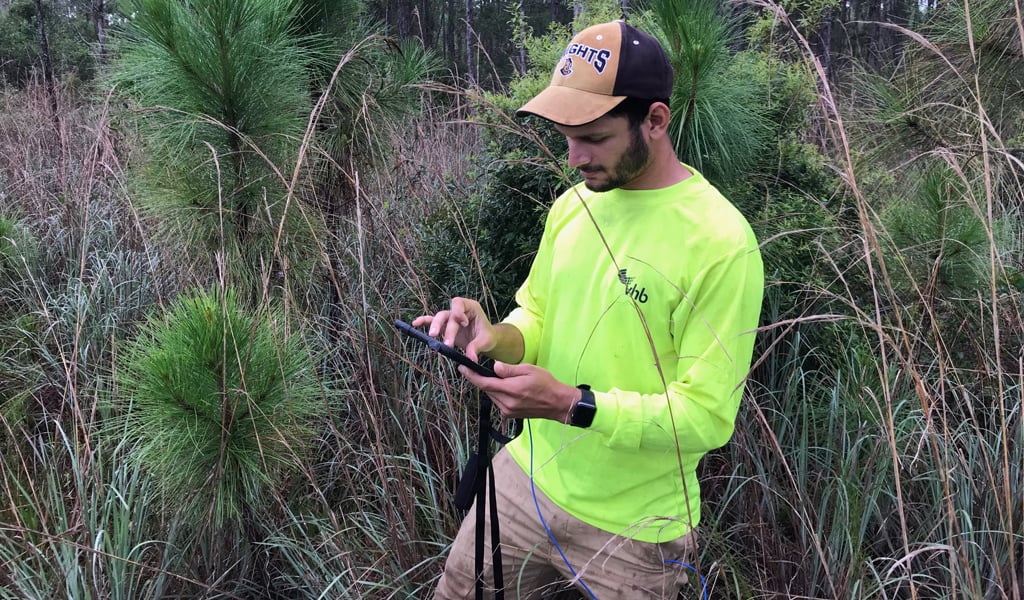
VHB: Fieldwork for environmental scientists looks different today than it did 20 years ago. You use a tablet to record and analyze data in real-time. How is technology enhancing your job?
John: We still get wet surveying wetlands! But the ability to synthesize and communicate important data to public and private clients is enhanced with technologies like GIS (geographic information systems). VHB is completing a Five-Year Wetland Health Assessments for Tampa Bay Water and the Southwest Florida Water Management District, where we evaluated wetland soils, hydrology, and vegetation to characterize the health of 400 wetlands in North Tampa Bay and update a regional study conducted by our clients in the late 1990s. We want to see if regional cutbacks in the groundwater withdrawals have led to improved ecosystem health. Collecting this amount of data in our preferred time window would be almost impossible using pen and paper.
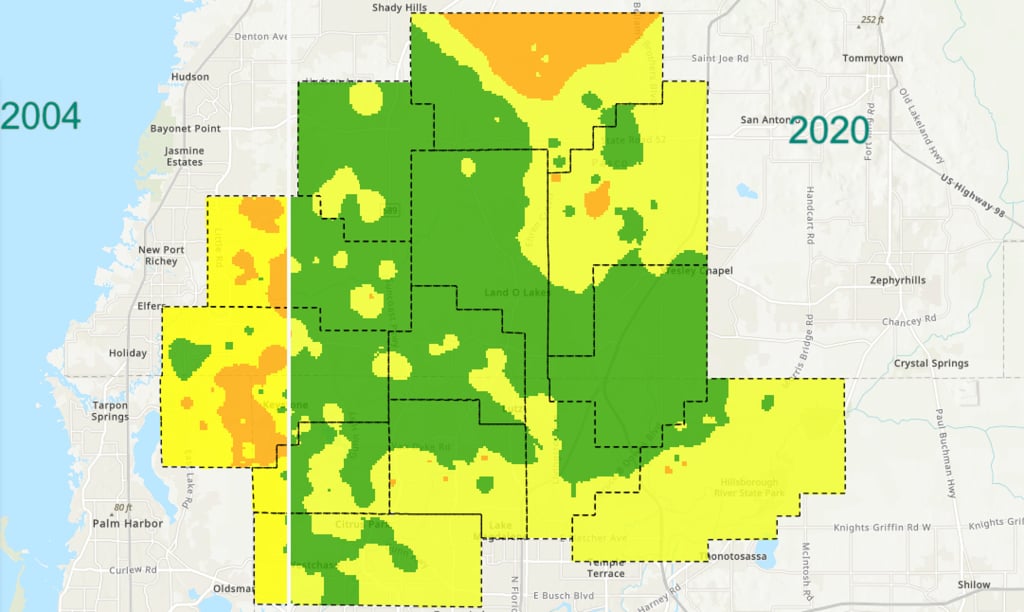
For this project, we created a custom mobile application driven by Esri’s Survey123 software and shared it with our client. They used it to collect their own data and were very impressed! To illustrate our key findings, we developed an interactive Esri StoryMap that stepped through crucial takeaways, included appealing “change” or “difference” maps that highlighted improvements or degradation over time illustrated by photos and graphics. The client can use the web-based application to search by wetland number, associated wellfield, data or information type, and study year to look up wetland sites and corresponding health trends near regional wellfields or individual wells, helping them manage groundwater production in response to climate events or other factors. Overall, this project showed that the reduction in pumping successfully facilitated environmental recovery, and these findings could become pivotal as similar efforts gain traction statewide.
VHB: How does your work on sustainability and water resources affect your life outside the office?
John: The work I do with VHB came about in part due to my interest in the environment and the global need for sustainable practices. For one, I’ve adopted a strictly plant-based diet for more than 11 years. Producing and consuming meat, especially beef, puts a huge strain on global water use, biodiversity, and land availability. This one change, whether in full or in part, could be the single biggest thing a person does to help reduce their footprint.
VHB: What VHB Gulf Coast projects are you most excited about in 2022?
John: I’m looking forward to the continuing work VHB is doing with Florida’s Water Management Districts and local governments, especially in light of the funds and assistance made available by the state legislature and the IIJA. VHB is helping four Water Management Districts now throughout the state, and it’s fascinating to see how different ecosystems, geological formations, and water sources affect how water is managed and utilized. I’m also proud of the work VHB is doing regarding sustainability and resiliency planning with local governments, like our role in developing Pinellas County’s Resiliency Plan. I hope to see us continue to expand roles like that with new entities as we continue to partner with clients in shaping constructive solutions. It’s great to know VHB’s work across markets is helping our clients and communities move closer to clean energy goals and a brighter future.
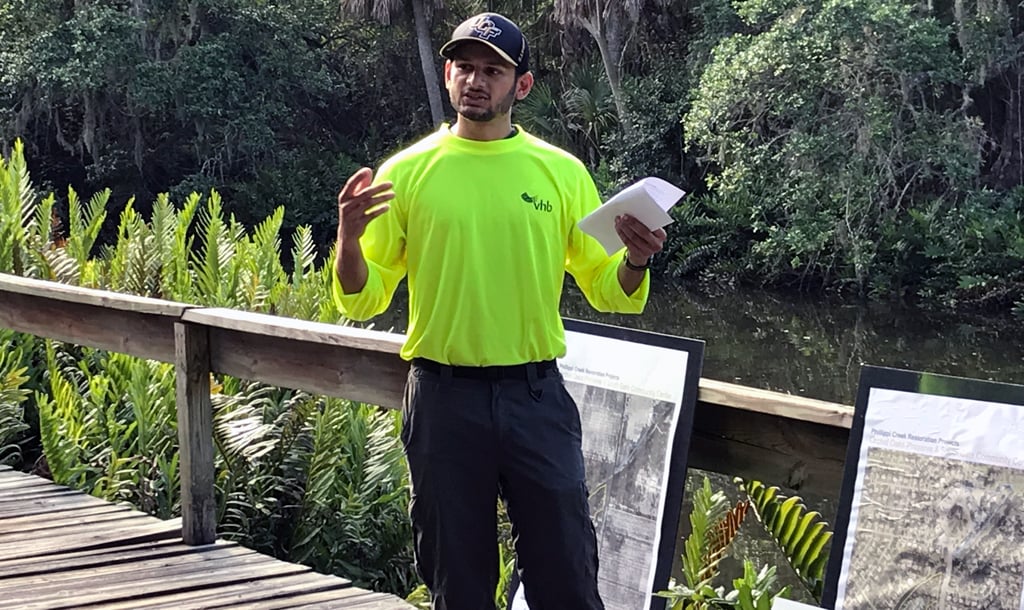
For help conserving and protecting water sources in your community, reach out directly to John.

